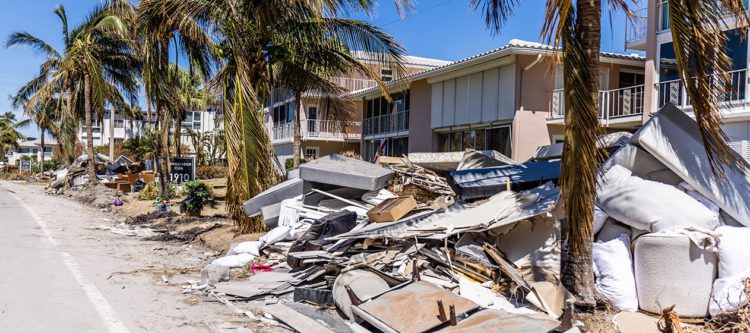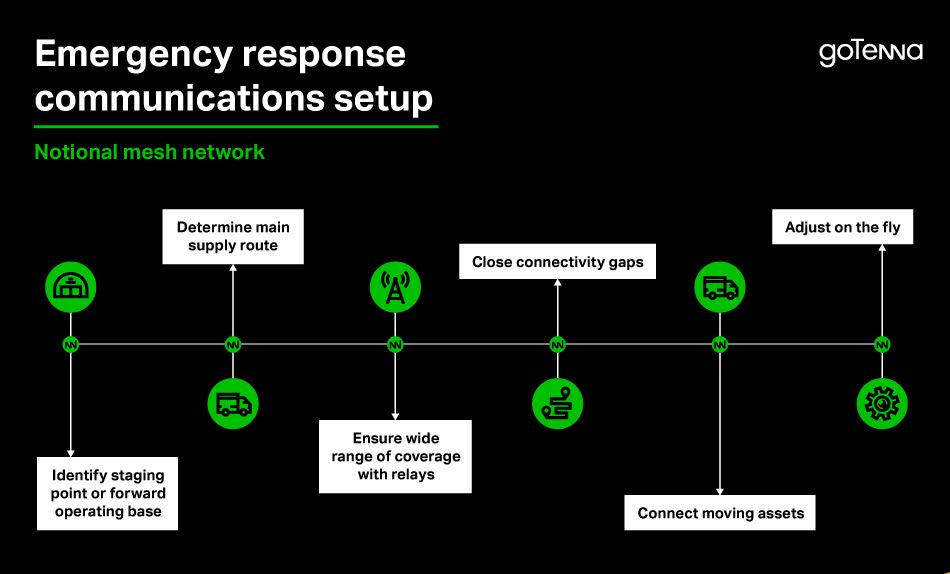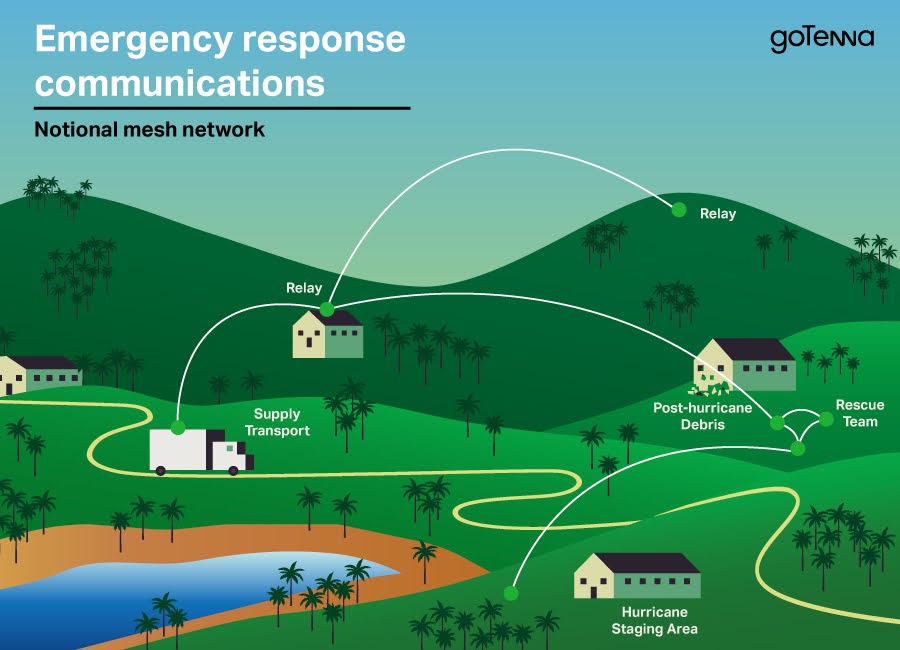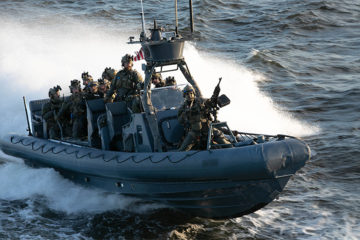How to set up an emergency response communication network to ensure crisis connectivity

All field operators— military personnel or emergency response workers—need numerous things to accomplish their mission. They require physical access to supplies, the ability to monitor their teammates, and the establishment of a main supply route (MSR). These operators also rely on communication to stay informed during dynamic situations, ask for assistance, get the latest orders, and have situational awareness of their environment and surroundings.
When disaster strikes, and operators need to respond and deploy, they follow an almost universal playbook. First, a staging point is identified—a forward operating base (FOB) for the military or an operations center for disaster response.
That staging point will become home to the many essential support and logistics staff that often outnumber the tactical operators. It will be where supplies are kept and distributed and where tactical operators converge to coordinate efforts, get briefed on new developments, and receive orders. The team establishes an MSR to ensure supplies reach tactical operators at the staging point.
That handles one of the requirements – establishing supply lines – but it doesn’t do anything to meet the communications requirement, which is often incredibly challenging in the locations where these missions occur. Establishing communications between this staging or logistical point and the tactical operators in the field can be a struggle at the tactical edge, where terrestrial communications networks are often untrusted, denied, or degraded.
“Every mission is unique and has its challenges. Leadership needs to analyze and understand the unique scenario in which tactical operators work and build their mobile mesh networks to meet their requirements.” –Luke Stewart
For the military, existing networks might not be reliable or could cause a security risk if used. For emergency responders, existing cellular or internet networks are often unavailable due to a man-made or natural disaster.
For both sets of tactical operators, there is often a clear need to establish new networks or methods of communication that will enable coordination and situational awareness.
The tool most frequently used for this is traditional voice radio, but it has limitations. Voice radios lack range, often require fixed repeater sites, and can be challenging to hear in specific scenarios. Line-of-sight challenges caused by geographical, topographic, and elevation changes can also negatively impact range.
I’ve heard of numerous scenarios where emergency response personnel working through debris or at the top of electrical poles or communications towers must descend, relocate, and scramble to the top of a terrain feature where line-of-sight is less of a challenge. From there, they can report in to assure their teammates that they’re okay and get updated on any changes to the mission.
“A knowledge and understanding of the scenario and mission are essential. Will a FOB or operations center be established, and will the area be accessible? If so, relays ensure a wide range of coverage across the entire operational area” — Luke Stewart
Personnel accountability reporting should occur at regular intervals—maybe once an hour—to ensure that all responders are safe and have the latest information. This extra step can disrupt operations and slow the mission down to a crawl.
Mobile mesh networking is the better, more viable alternative in these situations. Since each radio functions as both a receiver/transponder and a relay, each node will receive a signal and then broadcast it to others in the area. Mesh networks enable emergency response and military organizations to rapidly construct an ad hoc network that blankets the area of operation. This network can provide essential communications and situational awareness capabilities and enable other situational awareness and communication tools – such as the TAK application – in off-grid environments.
But how should these teams structure and build this off-grid, mobile mesh network to enable their operations? How should they ensure their created network meets their unique needs and requirements? Here are three steps or considerations to ensure they’re building their network correctly.

Step 1: Analyze the scenario and identify comms requirements
Every mission is unique and has its challenges. Leadership needs to analyze and understand the unique scenario in which tactical operators work and build their mobile mesh networks to meet their requirements.
For example, let’s say military personnel are exfiling or evacuating personnel from an area. Deploying goTenna EdgeRelays or other communications hardware could be counterproductive. If the team leaves the area, they’ll invariably be unable to retrieve this equipment, effectively ceding it to the enemy and surrendering essential resources that could be important for future missions.
A knowledge and understanding of the scenario and mission are essential. Will a FOB or operations center be established, and will the area be accessible? If so, relays ensure a wide range of coverage across the entire operational area.
“By combining an understanding of the scenario with a sense of the local environment, leadership can identify the best and most effective way to ensure coverage and connectivity for every tactical operator.” –Luke Stewart
However, if the scenario involves leaving the area hastily if the intent is to move or redeploy the assets, or if the environment is shifting and changing in ways that could limit the team’s ability to recover devices – think of scenarios like wildfires and floods – relays may not be the best solution.
Instead, mobile mesh networking radios – such as the goTenna Pro X2 – should be issued to all personnel. Those operators should then be instructed on how to use them optimally – keeping them exposed and attached high up on their kit for maximum performance and effective range.
Step 2: Assess the environment and bridge connectivity gaps
Once leadership understands the scenario in which they’re operating and the unique requirements of the operators, they can begin to deploy a mobile mesh network that best meets those requirements. However, like voice radios, line-of-sight impacts mobile mesh networking nodes. A mesh network makes understanding the environment in which personnel operates incredibly important since operators can track each node on a common operating picture in real-time.
Are teams operating in a valley separated by the FOB or operations center by tall hills or a mountain range? Are there high points where goTenna EdgeRelays or goTenna Pro X2 devices in “Relay Mode” can be rapidly deployed?
By combining an understanding of the scenario with a sense of the local environment, leadership can identify the best and most effective way to ensure coverage and connectivity for every tactical operator.
For example, let’s say that emergency response crews are rescuing survivors of a massive hurricane while others are working to repair local infrastructure to restore power and communications in the region. In this rescue scenario, the threat is gone, and tactical operators will continue to access the entire area and can safely recover equipment. Let’s also assume that the hurricane damaged low-lying areas around the coast more severely and that the operations center further inland is at a higher elevation or separated by large hills.

For emergency response use cases, support and logistics staff might want to deploy multiple goTenna EdgeRelays on high points strategically located between the operations center and the coastal areas where responders are working. EdgeRelays would eliminate any range issues created by changes in elevation and ensure that every tactical operator could communicate with the operations center and each other.
Let’s look at another scenario in a different environment. A military unit exfils from an area and falls back to another FOB. The elevation and topography around them and between them and the FOB are relatively flat. In this environment, each tactical operator should mount a goTenna Pro X2 device to their vehicles to provide adequate coverage and connectivity between all parties.
Step 3: Be aware of all moving assets and connect them together
Mobile mesh networking devices can efficiently expand operational range and create massive bubbles of connectivity in numerous ways. Suppose leadership understands the scenario and has knowledge of the area. In that case, they may be able to creatively deploy mobile mesh networking devices to meet their unique requirements – but only if they have certain assets at their disposal.
Aerial assets or existing cellular towers can increase the range of mobile mesh networking devices and deliver communications to various operations.
For example, let’s say that a wildfire has erupted and is swiftly traveling through acres of land. The environment is unstable and quickly changing, making it challenging to deploy goTenna EdgeRelays because the fire could impact them, or the team may be unable to safely deploy or recover them as the fire spreads and changes direction. Suppose the area’s topography is mountainous, and the geographic coverage area is significantly large. In that case, it might be more efficient to strap a goTenna Pro X2 to the helmet of every wildland firefighter.
“Most military and emergency response organizations will have an understanding of the mission’s scenario, environment, and assets before they deploy. Unfortunately, because of these missions’ nature, all three elements will invariably change.” –Luke Stewart
In this environment, it could be ideal for lifting a goTenna EdgeRelay or Pro X2 in “Relay Mode” off the ground and into the air. A Pro X2 in “Relay Mode” or an EdgeRelay placed at a significant elevation above the operating area would blanket the entire area in a bubble of connectivity. Then, all operators are entirely immune to changes in elevation or topography. But during a wildland fire it may only be possible if the team can access an aerial asset.
Thankfully, deploying aerial vehicles in wildland fire scenarios has become increasingly common. Planes and helicopters survey the area and fight the fire. Drones also provide situational awareness and gather intelligence about the fire’s path and spread. Suppose the team knows that these assets are available. In that case, they can attach the appropriate goTenna device and then create a bubble of connectivity from high in the air that covers an enormous operational area.
Before you go and as you go
Most military and emergency response organizations will have an understanding of the mission’s scenario, environment, and assets before they deploy. Unfortunately, because of these missions’ nature, all three elements will invariably change.
Leadership and logistics teams may have to reevaluate their communications networks on the fly as the mission evolves. But by starting with these three steps or considerations, they should be able to rapidly identify the mission’s unique requirements and quickly redeploy their communications solutions to best meet them.
If you would like to learn more goTenna EdgeRelays, click HERE.







No Comment